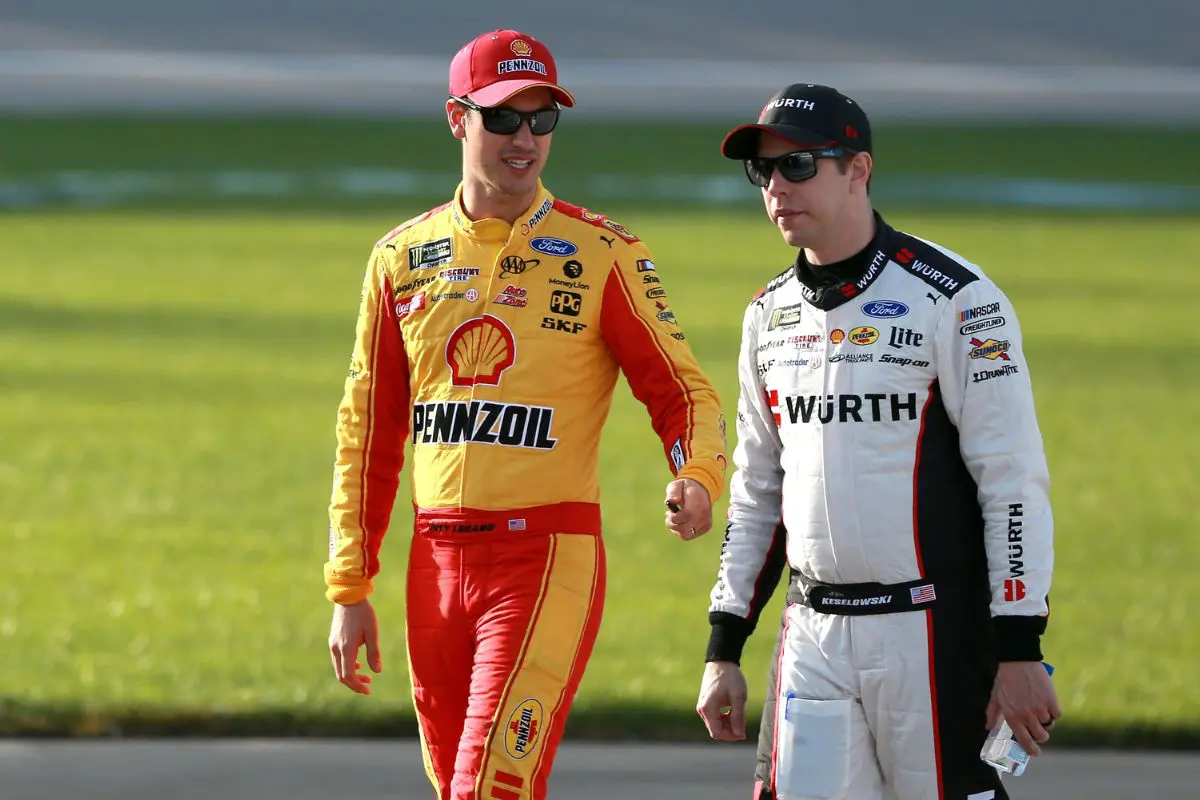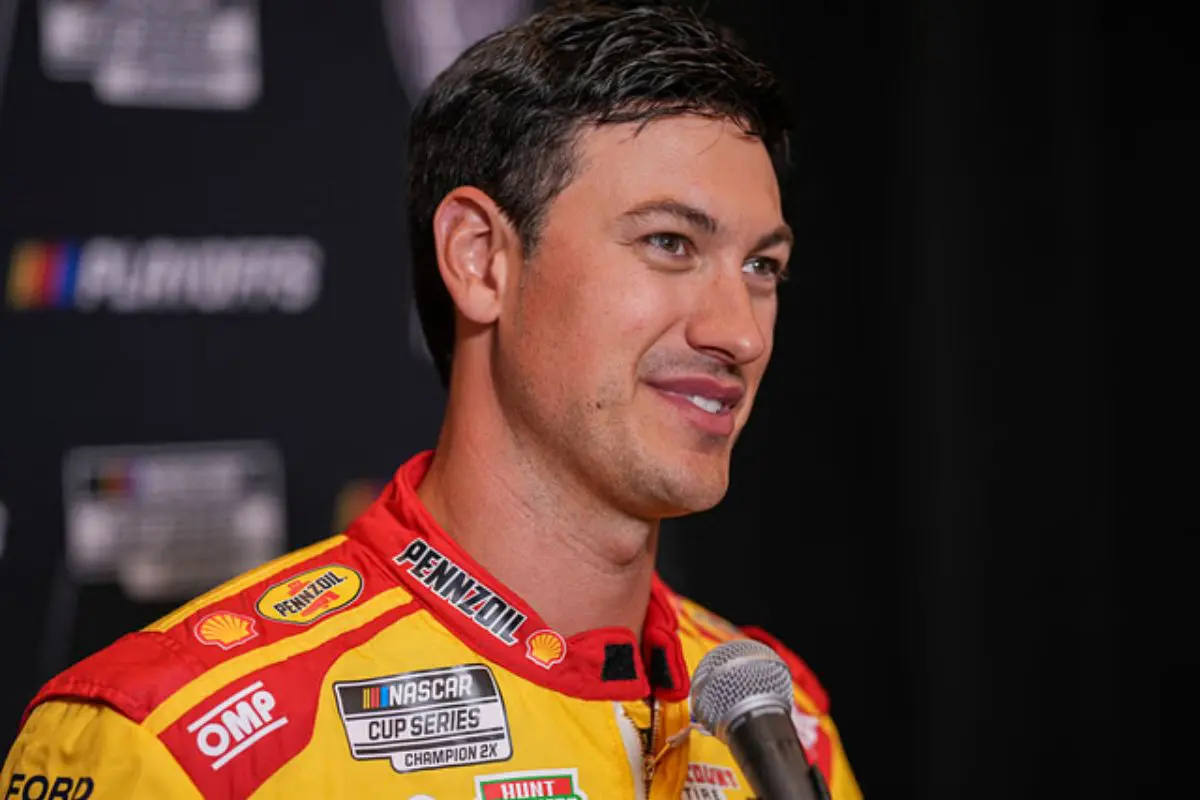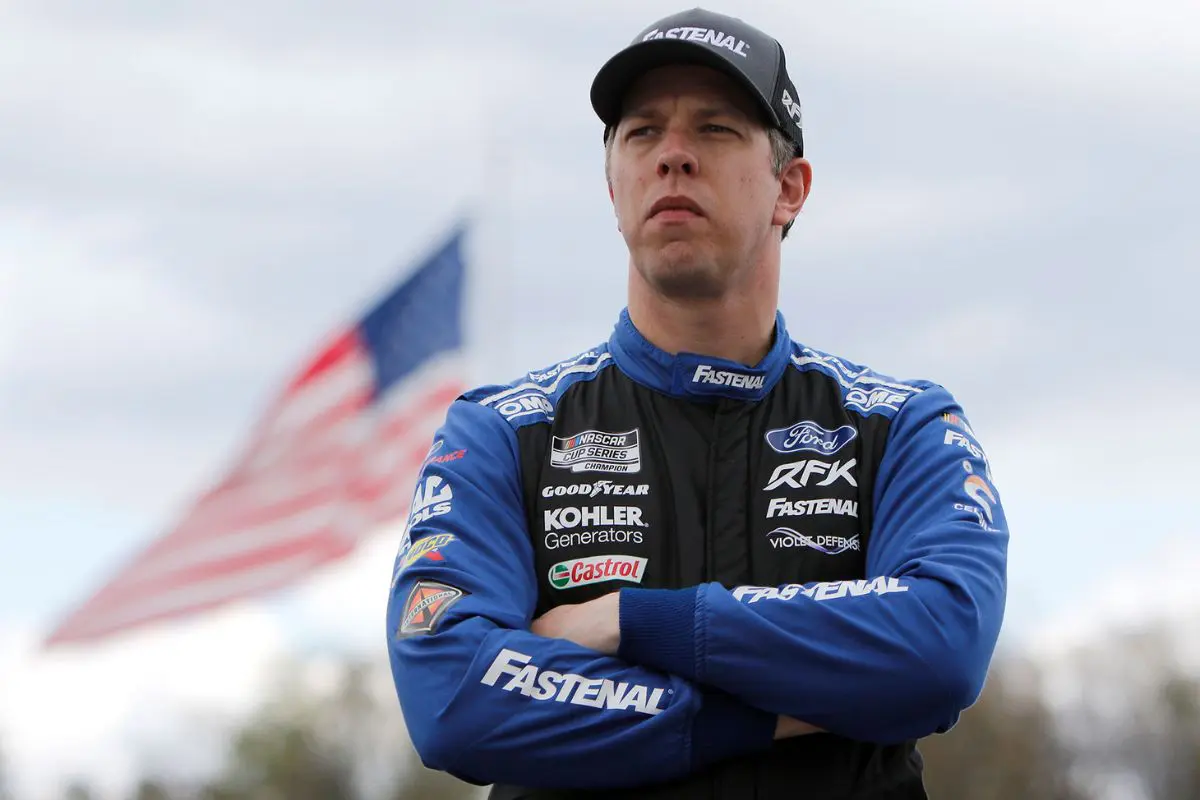Joey Logano Takes Blame for Brad Keselowski’s Crash: In a recent post-race analysis, Joey Logano openly accepted responsibility for the crash that involved his teammate Brad Keselowski, citing the perilous track conditions at Watkins Glen as an important contributing factor. His remarks show the complexities of driver interactions in high-pressure scenarios and raise critical questions regarding NASCAR’s track maintenance protocols. Logano’s frustration with the governing body hints at a growing discontent among drivers about safety standards, particularly as playoff implications loom. How this incident may influence both team dynamics and NASCAR’s regulatory practices remains to be seen.
Key Highlights
- Joey Logano admitted fault for the collision with Brad Keselowski and William Byron during the race.
- Logano cited hazardous track conditions due to tire debris, likening it to driving on marbles.
- He expressed frustration over NASCAR’s slow response to cleanup efforts and track maintenance.
- Logano’s actions significantly impacted the race outcomes for Keselowski and Byron, who finished poorly.
- The incident highlighted the interconnected nature of racing dynamics and the importance of improving track safety.
Wreck Fest at Watkins Glen
The Watkins Glen race can be characterized as a chaotic spectacle, marked by an alarming number of collisions that left many drivers reeling from the relentless on-track challenges. From the very initial lap, the race exhibited a disconcerting pattern of wrecks, with Ryan Blaney being one of the early casualties. Such incidents not only diminished the competitive spirit but also cast a shadow over the drivers’ confidence, as they maneuvered a track fraught with peril.
The primary catalyst for this tumultuous environment was the new tire compound, which resulted in excessive tire graining. This phenomenon created a treacherous layer of debris that accumulated on the racing surface, as articulated by Joey Logano, who likened the sensation of driving over it to steering through marbles. The presence of this debris dramatically escalated the risk of collisions, compelling drivers to contend with unpredictable handling characteristics.
Logano’s radio communications revealed a sense of exasperation, particularly during his collision with Brad Keselowski. This incident exemplified the broader issues at play, as drivers struggled to maintain control under deteriorating conditions.
The wreck fest at Watkins Glen serves as a glaring reminder of the critical interplay between track conditions and driver performance, emphasizing the need for ongoing scrutiny and adaptation of racing strategies in the face of evolving challenges.
Joey Logano Admits Fault for Causing a Wreck
In the wake of the wreck fest at Watkins Glen, Joey Logano acknowledged his role in a crucial incident that involved fellow competitors Brad Keselowski and William Byron. Amidst a chaotic race characterized by numerous crashes, Logano’s admission of fault stands out, reflecting both accountability and the complexity of racing dynamics under strain.
Despite finishing in 15th place, Logano’s actions had a domino effect on his competitors. The collisions he initiated severely impacted Keselowski’s performance, resulting in a disappointing 26th place for his No. 6 Ford, while Byron suffered even greater misfortune, crossing the finish line in 34th.
The aftermath of the race saw many drivers struggling with damaged vehicles, a proof of the perilous conditions on the track that day.
Logano’s willingness to step up and take responsibility for the wreck highlights a critical aspect of competitive sports—recognizing the interconnected nature of driver actions. While racing is inherently aggressive, the implications of one driver’s decisions can greatly alter the trajectories of others.
“I mean, really, I’m making excuses but, you know, I probably needed to check out more. But the track’s a complete disaster. They need to clean it up.” – Logano
By admitting fault, Logano not only demonstrates sportsmanship but also contributes to a culture of accountability that is vital for the integrity of the sport.
Logano’s Explanation of the Incident
Acknowledging the complexities of the incident, Joey Logano provided a detailed explanation of the events leading to the crash. He articulated the chaotic circumstances that unfolded on the track, asserting that the conditions were not conducive to safe racing.
“And I got pushed, you know? I think I was maybe four wide at one point. They said there were three underneath me, so I tried to give room there, and I got up in the marbles.” – Logano
Logano’s account emphasizes several key factors that contributed to the collision:
- Overcrowding: Logano noted that he found himself in a precarious position, potentially four-wide, which exacerbated the risk of collision.
- Marbles on the Track: He pointed out the presence of tire debris—referred to as “marbles”—which created hazardous driving conditions, making it difficult for drivers to maintain control.
- Tire Performance: Logano expressed concerns about the state of his tires, likening their grip to “crappy tires” when he attempted to regain control of his vehicle.
- Responsibility and Accountability: While Logano took ultimate responsibility for the crash, he emphasized that the track’s disarray notably influenced the situation.
“When I went to turn back to the left, it’s like I’ve got crappy tires, and I got into them. So, I mean, it’s still on me, right? But at the same time, clean the damn track!” – Logano
His explanation highlights the interplay between driver decision-making and track conditions, showing how external factors can dramatically impact race outcomes.
Logano’s insights not only clarify the incident but also serve as a call to action for NASCAR to address the critical issue of track safety.
Logano’s Frustrations with NASCAR
Logano’s detailed account of the crash not only highlighted the challenges faced by drivers but also illuminated his growing frustrations with NASCAR’s response to track conditions. He expressed discontent over the lack of timely action regarding tire debris on the track, which he had raised multiple times via radio communication. “I brought it up at least two to three times about cleaning the track before the restarts, but it just didn’t happen,” Logano lamented. This oversight contributed to the chaotic conditions that led to the incident.
The implications of insufficient track maintenance extend beyond individual races; they can impact the broader landscape of driver safety and competitive integrity. Logano’s frustrations are representative of a recurring theme in motorsport: the balance between maintaining race excitement and ensuring driver safety.
Brad Keselowski’s Risky Playoff Position
While steering through the challenges of the current NASCAR season, Brad Keselowski finds himself in a precarious playoff position following the Watkins Glen race. With his ranking, he is stumbling on the edge of elimination, a reflection of the relentless nature of competitive racing.
The aftermath of the collision with Joey Logano has compounded his challenges, leaving him with little margin for error. Despite these setbacks, Keselowski’s performance offers a glimmer of hope as he prepares for the Bristol race.
To visualize the stakes he faces, consider the following four critical elements of his situation:
- Points Bubble: Keselowski sits on the playoff bubble, with limited points separating him from the drivers below him.
- One Last Chance: Bristol represents his last opportunity to secure a spot in the next playoff stage, amplifying the tension.
- Recent Performance: Scoring 11 points during the Watkins Glen stages demonstrates his capability, albeit overshadowed by the crash.
- NASCAR’s Judgment: The lack of penalty against Logano leaves Keselowski feeling the weight of external factors impacting his fate.
As the tension mounts, Keselowski must navigate this critical crossroads with precision and strategy. The upcoming race at Bristol will not only define his playoff path but also test his resilience in the face of adversity, emphasizing the significant stakes of this season.
News in Brief: Joey Logano Takes Blame for Brad Keselowski’s Crash
The incident at Watkins Glen serves as a critical reminder of the complex dynamics within NASCAR racing. Joey Logano’s acknowledgment of responsibility not only highlights the interconnectedness of driver actions but also underscores the pressing need for NASCAR to improve track safety protocols. The repercussions of hazardous conditions extend beyond immediate race outcomes, impacting playoff aspirations and comprehensive driver safety. Addressing these challenges is crucial for fostering a safer and more competitive racing environment in the future.
ALSO READ: Joey Logano’s Watkins Glen Reality Check: Are NASCAR’s Driver Perks Overrated?




